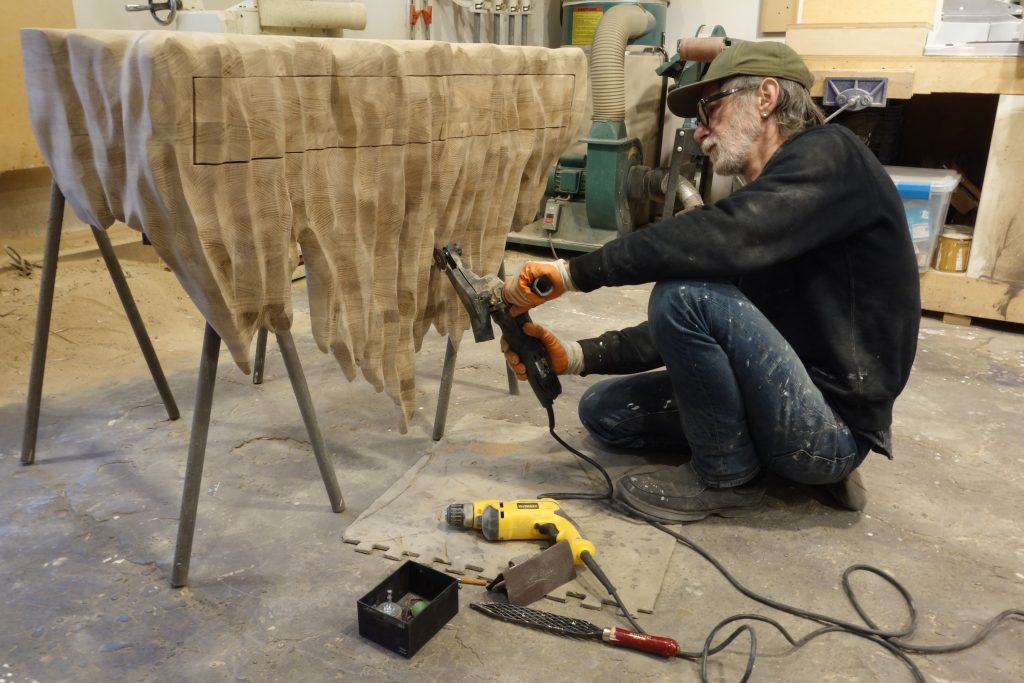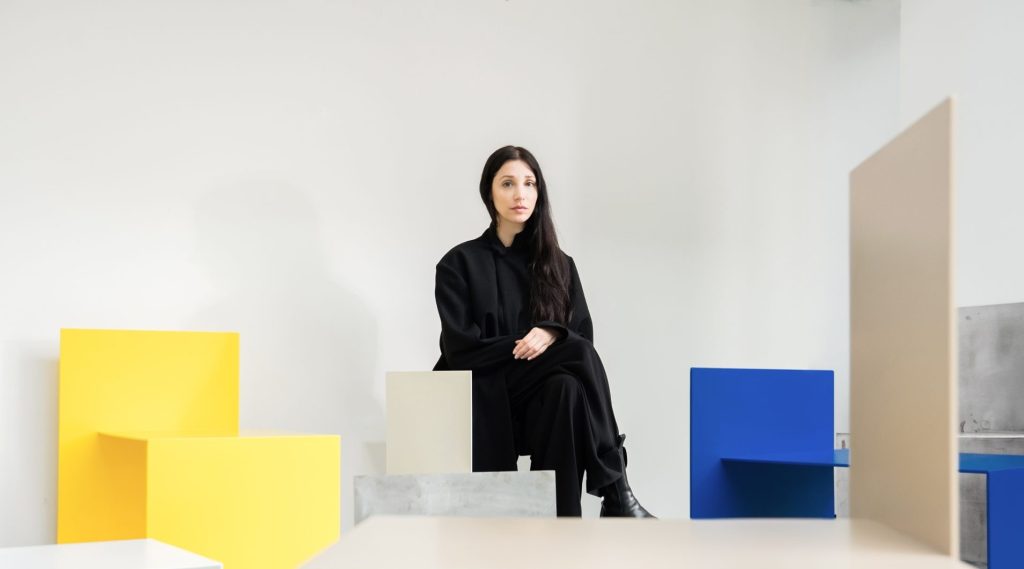Åsa Jungnelius at Crossovers: Domestication and the Body
“The objects become a sort of fetish of ourselves as individuals and our contemporary condition.”
Åsa Jungnelius
View & Purchase Åsa Junelingus’ works in the Swedish Collection for Crossovers.
Holding an object in your hands, bringing it close to your body, feeling its smoothness or roughness, smelling something familiar or something completely alien, the ability to relate this object to something personal will define its place in our socially constructed world. Why does this matter anyway? Why is this important? Why should we always jump to relate objects from a material world to something familiar, something so inherently egotistic? What is it about humans that we always have this need to relate to a corporal language, to see our own bodies in a world of inanimate objects? Throughout art history, there has been a long-standing practice of creating symbolic language and bringing object interpretation back to the human body. This is one of the most effective communicative means, a language that anyone, across cultures, has the immediate ability to understand and comprehend (think of neolithic fertility effigies, Venuses). Whether it is relating to objects made and designed by our fellow human beings or from the ecology of our natural world, everywhere we look our brains somehow find a mirror back onto ourselves.
Anatomy and its social implications are not necessarily the most common subject matter and influences when it comes to interior and product design. What may first come to mind would be the gilded marble sculptures and embellishments typical of the Victorian era or roman revival works, but this is not what you will get with the works of Swedish designer Åsa Jungnelius. Multicolored, blown-glass, wall mounted candlestick holders complete with fluorescent pubic hair bring a light air to the more serious political and social subject matter, this intersectionality of her works acts as the perfect commentary for the time in which we live.
Jungnelius is a visual artist who, over an immense range of material and scale, utilizes and exploits this symbolic and instinctual language of the body to hold a mirror onto contemporary society, questioning social constructions. Her sculptural works range from hand-held and anatomically sized objects meant for a domestic setting, including candle holders and snack bowls, to monumental sized works including landscape art, and even a future train station. Across all these mediums and scale, a strong visual language and consistent surface persist. Jungnelius’ participation in the Swedish Collections at Crossovers gives viewers a glimpse into her practice and her particular symbolic language, Jungnelius explains to us how these domestic objects fit into her overall practice and their power of communication.
Your practice and visual language revolve around the human body, why does representing this in a domestic setting help to make a larger commentary on society?
My artwork triggers an entirely different process in us; in it, objects undermine authorities and establish new relationships. The question of function still arises but it is quickly subordinated to the demands that the objects place on us. Many of these objects seem to have come into being with a clear purpose: a bowl for dipping crisps in or a candlestick for lighting up the room. But they are also at the same time simply themselves, artworks in their own right.
The works which you have featured in this collection are smaller, anatomically reminiscent sized works, how do you maintain these references and convey a familiarity and intimacy to the human body when scaled to more monumental works?
My work is often material-related and goes from interiors to monumental formats where our bodies’ relations, the objects we surround them with and the rooms they act in together are investigated through a material language. The constant posting of material in the intersection of economy, ecology and the social describe the preconditions for the time in which we live. The objects become a sort of fetish of ourselves as individuals and our contemporary condition.






How does your manipulation and choice of materials, colors or textures guide viewers in relating towards your objects? (i.e bright colors, and fur on genitalia-referencing objects)
Material is my language and the surface is never superficial, the surface is the content.
Why is addressing stereotypes an effective communication tool when creating a dialogue around a political or societal idea?
To totally brake the opinion of who can use what kind of stereotype attribute, it is always a socially constructed idea that we as a collective always can change.






Crossovers by Adorno will present a range of collections of dynamic works by independent designers from a selection of local scenes. The exhibition celebrates the designers and communities playing a central role in maintaining and renewing today’s local design and crafts cultures. Jungelius’s work and the works presented in the Swedish Collection by Paola Bjäringer represent a dynamic and forward-thinking section of contemporary design vital to the progression of this art form. Presenting these works together with works from 10 other top design scenes from around the world creates a cross-cultural dialogue to examine the current state and future of contemporary design.
To preview the Swedish collection and stay up to date on the release of further previews sign up below.
Subscribe to Adorno Editorial
Supported by:




Åsa Jungnelius – Bio
Åsa Jungnelius is a visual artist (MFA) and a Lecturer at Konstfack, University College of Arts, Crafts and Design, based in Stockholm and Månsamåla. Her work is often material-related and goes from interiors to monumental formats where our bodies’ relations, the objects we surround them with and the rooms they act in together are investigated through a material language. The constant positioining of material in the intersection of economy, ecology and the social describes the preconditions for the time in which we live. The objects become a sort of fetish of ourselves as individuals and our contemporary condition. Jungnelius is Artistic Director of Residence-In-Nature and works on a public artwork, The Seashell, for the extension of the Stockholm metro (2016) Her work has been exhibited at Tensta Konsthall (2007) Crystal (2011), Norrköpings konstmuseum (2011), and as site-specific work in Hötorgshallen commissioned by the City of Stockholm (2013). Kalmar konstmuseum (2013), Chamber N.Y (2017) Dunkers kulturhus (2017) Fullersta gård (2018) ArkDes (2018) He Xiangning Art Museum in Shenzhen (2018) and Luleå Biennalen (2019). Jungnelius was from 2007 to 2013 a designer at Kosta Boda. She was part of founding WeWorkInA FragileMaterial (2003-2010) and today runs LASTSTUDIO.
During 2019 Jungnelius will be exhibiting in a solo presentation at Vandalorum, Artifacts, the origins of things and participating in OpenArt.





